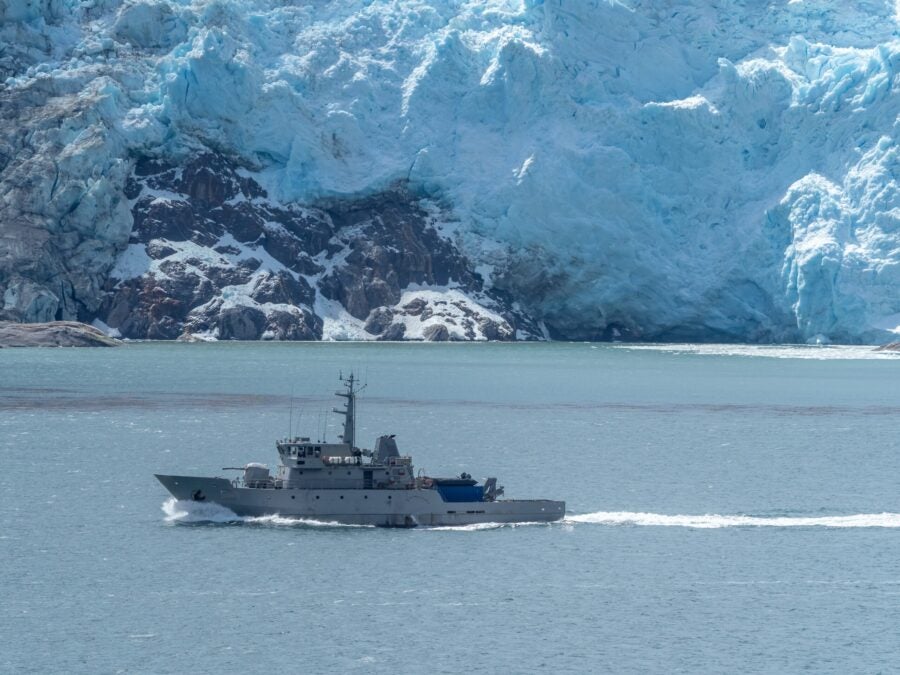
Achieving sustainability targets set out at the United Nations Climate Change Conference 2021 last October will not be possible without collaboration. The defence industry plays a huge role in this as both its active and passive emissions are amongst the highest globally. QinetiQ talks to Norbert Neumann about ways to help defence achieve net-zero by 2050 or sooner.
We know that climate change will aggravate certain security issues and defence itself has grave effects on climate change too. In the UK, the Ministry of Defence (MOD) accounts for 50% of central government’s emissions. That means the country will not be able to reach its net-zero targets without the defence industry and MOD activities moving toward more sustainable solutions.
However, the MOD, or any other government body, cannot do it alone. It is vital that companies play a role not only in developing and delivering solutions that are more sustainable and enhance sustainability but also in reducing internal emissions and ensuring that the supply chain follows the same trend. Science and engineering company QinetiQ is committed to becoming a net-zero company by 2050 or sooner and is ready to help its customers and partners to meet carbon targets.
The plan
QinetiQ takes an approach of four initiatives to achieve its sustainability objectives. The first one is achieving net-zero operations, while the second step focuses on net-zero upstream and downstream. Group Business Planning Director at QinetiQ Ross Rattray says: “That’s really looking at the scope of emissions. In this step, our focus is on reducing emissions from our procured goods, services and capital goods by working with our ecosystem of suppliers.”
The third category of initiatives places the emphasis on the internal enablers and industry engagement that QinetiQ thinks it needs to do to achieve net-zero within the company. Lastly, the fourth initiative is about how the company can contribute more broadly to achieving net-zero.
How well do you really know your competitors?
Access the most comprehensive Company Profiles on the market, powered by GlobalData. Save hours of research. Gain competitive edge.

Thank you!
Your download email will arrive shortly
Not ready to buy yet? Download a free sample
We are confident about the unique quality of our Company Profiles. However, we want you to make the most beneficial decision for your business, so we offer a free sample that you can download by submitting the below form
By GlobalDataGreenhouse gas footprint can be broken down into three scopes. Scope one consists of fuel consumed by equipment, vehicles, aviation and estates, scope two covers purchased electricity and scope three includes capital and purchased goods, services, transport and distribution, business travel and staff commuting and the emissions from the usage of sold products.
“Under initiative one, which was our scope one and two emissions, we’re targeting a 50% reduction from the base year of 2020 to 2030,” says Rattray. “In terms of our scope three emissions, we want to reduce them by 30% by 2030.” This would account for a 33% reduction in harmful gas emissions across QinetiQ’s whole value chain by 2030.
A few examples of what the company is doing to reduce its carbon footprint include the analysis of energy consumption across sites, upgrading buildings and installations, using more energy-efficient lighting and exploring ways to introduce renewable energies in some facilities while also looking into adopting technologies that allow QinetiQ the offset of residual energy.
Supporting the UK MOD
In terms of helping the MOD in becoming more sustainable, QinetiQ divides its efforts into three main categories. Firstly, seeking ways to deliver test and evaluation in a more environment-friendly way.
QinetiQ business development deputy group functional director Iain Farley says: “For example, doing less live activity. It is about how you can do some part of the test and evaluation (T&E) and training digitally. The more digital T&E you can do, the less live operations and the less emissions you make.”
Moving certain training programmes into a virtual and synthetic environment reduces carbon impact, but that is not all, he says. Using its pool of experts and services, the company can help the MOD understand more sustainable emerging and future technologies that might be applicable to defence and might be able to be delivered into service.
It is also important where the company puts the money in order to develop more sustainable technological solutions. QinetiQ continues to invest in the electrification of land vehicles. “We’re investing in developing technologies that the MOD could integrate into their future platforms,” Farley says.
“This might actually increase our own emissions in the short-term as we might have to manufacture new equipment, but ultimately we’re delivering a capability that reduces the MOD’s emissions as well as providing them with some operational advantage.”

Help the industry and the supply chain
QinetiQ estimates that 80% of its emissions come from procured goods, capital goods and services and thus investigating issues and potential solutions around the supply chain is its priority. Reducing emissions across the supply chain is a great challenge and a collaborative approach is necessary if substantial improvements are to be achieved.
An example of what QinetiQ is doing to support the supply chain in becoming more sustainable is the QinetiQ Collaborate series, where the company provides a forum for customers and suppliers to engage with each other on topical supply chain issues. This effort also helps share best practices across industry and agree on common terminologies. “We also want to help our suppliers to better understand their own footprints,” Rattray says.
Improving the understanding of climate change can eventually help refine solutions to combat that. “We are using every opportunity we can to engage with MOD sphere and groups, industry and SME ecosystem interactions to make sure we not only have a common lexicon and understanding, but that we understand how to respond,” Farley concludes.






